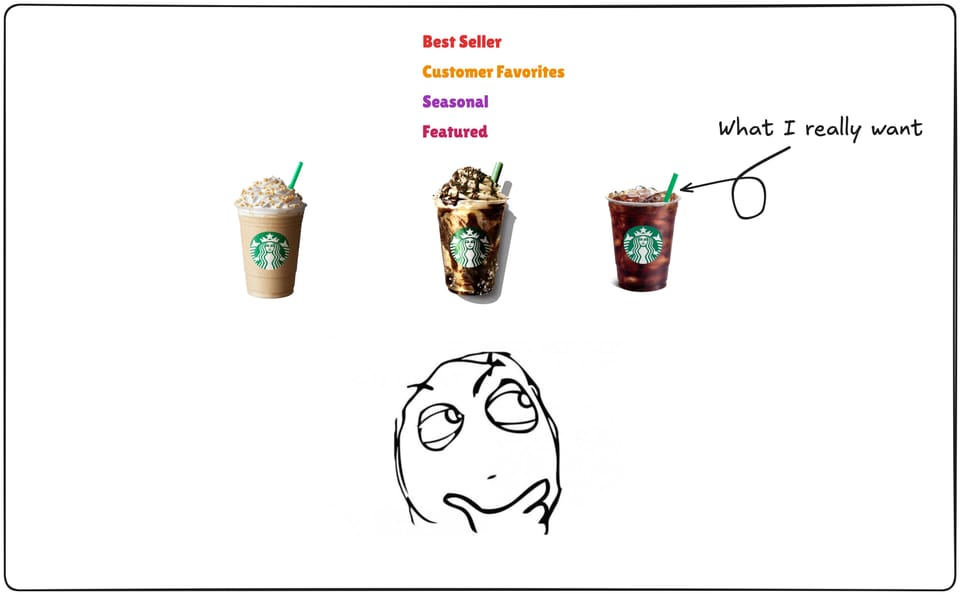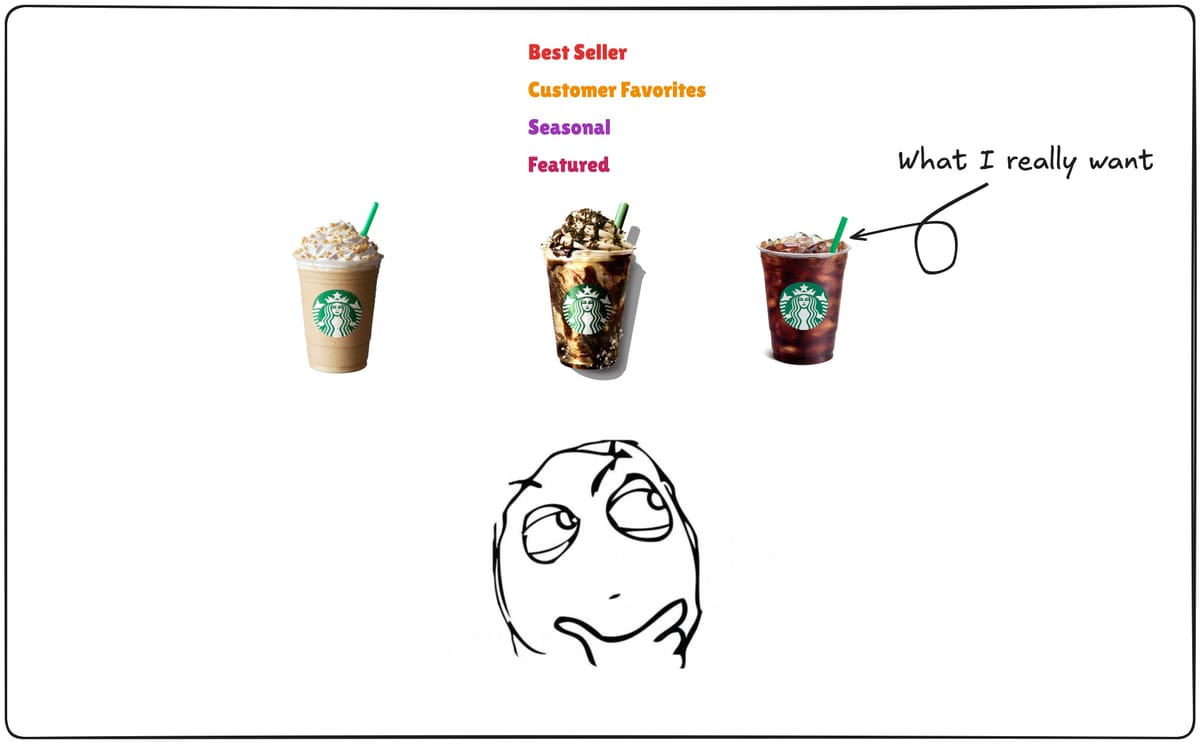The Hidden Persuaders in Your Daily Life: Insights from "Influence: The Psychology of Persuasion"

Have you ever stood at a beverage shop counter and, not knowing what to order, unconsciously chosen the drink labeled "Most Popular"? You're not alone—this is the "social proof principle" quietly at work in our daily lives.
The book "Influence: The Psychology of Persuasion" reveals the psychological mechanisms that affect our decision-making. While reading this book, I was repeatedly surprised by how frequently I fall into these influence traps. Here are my insights and reflections, which I hope will help you make more conscious choices in your daily life.

繁體中文版請點這
1. Social Proof Principle: We Are All Part of the Herd
Social Proof in Daily Life:
When browsing department stores, I notice I'm always drawn to the "Best Seller" section. Even though I've already found styles I like online, I linger in front of displays marked "This Season's Hottest Styles." We all tend to believe that if most people are doing something, it must be right.
When Social Proof Works Best:
- When I'm uncertain what to do (like visiting a restaurant for the first time)
- When I see choices made by people similar to me (apps used by people my age)
- During emergencies or complex situations (immediately wearing masks during a pandemic when everyone else does)
Examples from the Book:
- Products labeled as "most popular" immediately see increased sales because many people default to choosing what's popular when they can't decide
- When parking fee notices mention "most people pay their parking fees within two weeks," payment rates increase by up to 130%
- Canned laughter makes audiences find shows funnier, even when the content remains unchanged
- During the pandemic, what truly motivated people to wear masks wasn't the severity of the disease or protection benefits, but seeing others wearing masks
My Reflection: Looking back, how many of my purchasing decisions were based on "bestseller lists" rather than my actual needs? This reminds me to list my requirements before shopping and then consider public reviews.
Business Application: Websites always include a section (Testimonials) displaying various social proof, and despite having no evidence of authenticity, we tend to believe these reviews.
2. Consistency and Commitment Principle: We Are Slaves to Our Commitments
Personal Experience: Recently, after laser surgery, I knew I needed to rest my eyes regularly but couldn't tear myself away when focused. I installed Time Out, which forces a five-minute break every thirty minutes of computer use. Surprisingly, even when busy, I found it difficult to click "skip" when the break reminder appeared. That small setting became a commitment—to myself and my eye health. More interestingly, this digital commitment was far more powerful than my countless self-reminders to "remember to rest." I personally experienced how once a specific commitment is set (even to software), it creates an internal pressure that's difficult to ignore.
The Magic of Commitment:
- Once a clear commitment is established, even to software or oneself, it creates powerful constraints
- Specific time commitments ("after thirty minutes") are more effective than vague intentions ("remember to rest")
- Externalized commitments (like software reminders) trigger consistency mechanisms more effectively than purely mental commitments
Examples from the Book:
- Web developers deliberately reduce fields on the first page of registration forms, making members more likely to complete subsequent pages
This approach of starting with small requests and gradually leading to larger related requests is called the "foot-in-the-door technique"
- Written commitments have a magical power that makes them harder to break
The "low-ball technique": When recruiting students for a study group, only 24% agreed when told upfront it started at 7 AM. With another group, researchers first asked if they wanted to join a thinking process study group (56% responded positively), and only afterward mentioned the 7 AM start time. No one changed their mind, and 95% of these students actually showed up at 7 AM.
My Caution: Now I understand why many services first have you fill out forms and click "agree" before guiding you through registration. Next time I'm tempted by "just fill in basic information," I'll be more cautious about where this small commitment might lead. I've also learned to use this principle to help myself—setting specific, externalized commitments makes good habits easier to maintain.
3. Reciprocity Principle: The Psychological Trap of Gift-Giving and Free Samples
Personal Experience: When receiving gifts from friends or colleagues returning from abroad, I feel tremendous pressure when planning my own trips, thinking about how to reciprocate their kindness. As a result, I often end up buying local souvenirs I don't even like.
This reminds me of an experience at a Taipei department store—a counter clerk enthusiastically handed me a "free" skincare sample, saying "This is our newest product, a gift for you to try." I was politely "detained" for half an hour listening to a product presentation, and although I didn't purchase anything, I still left my email address. The two scenarios are different but triggered the same feeling of "owing a favor."
The Dual Nature of Reciprocity:
- In international exchanges, reciprocity symbolizes respect; in commercial environments, it's often used as a sales technique
- That small skincare sample created a subtle sense of obligation, making it difficult to leave directly
- Similarly, friends' gifts make me feel I must reciprocate with even better gifts
Examples from the Book:
- The reciprocity principle means that when someone gives you something (no matter how small), you unconsciously want to give something back
- When doing someone a big favor, don't say "it's nothing" but rather "I believe you would do the same for me," to fully utilize the reciprocity principle
- A reliable authority appearing disinterested in personal gain is what truly brings benefits
My Response Strategy: Gift-giving should be based on politeness and genuine exchange, without excessive pressure. When faced with "free" small gifts at department stores, I've learned to politely decline. The key is recognizing that in commercial environments, there are no truly "free" gifts, while in cultural exchanges, moderate reciprocity is healthy.
4. Scarcity Principle: From Limited-Time Hotel Deals to Overseas Exclusive Sneakers
Personal Experience: A few months ago, while browsing Tokyo hotels on Booking.com, the page constantly flashed alerts like "Only 1 room left!" "15 people are viewing this room type" and "Limited-time discount countdown: 12 hours." Though I was just casually browsing with no intention to decide immediately, I found myself booking a room that exceeded my budget under this pressure.
Passing by a New Balance store in Tokyo, I saw a "New Year Limited Edition" pair of sneakers. The clerk enthusiastically told me: "This is the last pair in all sizes!" This planted a seed in my mind, and even though they didn't have my size in Japan, I rushed to buy the exact same style at a direct store in Taiwan after returning (and paid more for it).
The Global Temptation of Scarcity:
- Travel booking websites master the use of scarcity: "Only 3 rooms left" "9 people viewing"
- Labels like "Limited Edition" and "Local Exclusive" are particularly attractive when shopping abroad
- I often buy local-exclusive styles like HUF Osaka, Converse Tokyo, etc.
- Unfamiliar environments intensify our decision-making pressure, making the scarcity effect more powerful
Examples from the Book:
- Flawed items (scarce) are sometimes the most valuable
- Breaking abundant inventory into individual shipments is a smart approach
- Telling customers there's only one set of appliances left in the warehouse usually leads to success
- Boys choose toys placed on high shelves behind barriers rather than easily accessible ones
- Psychological resistance makes us want something more, and we start finding reasons to justify it
My Travel Defense Strategy: For "urgent" notices on booking sites, I've learned to check multiple platforms to compare actual availability. I set a "24-hour cooling period"—especially for "limited" items priced over NT$1,000. Before traveling, I set a shopping budget and remind myself: "Limited edition" doesn't equal "suitable for me."
5. Liking Principle: The Sweet Trap of Flattery
Memorable Experience: Last year, when I signed up for a trial fitness class, the trainer constantly praised me: "Your coordination is better than most beginners" and "No wonder you're a dancer." After each training session, he would sincerely say: "Your progress is really fast; have you considered entering fitness competitions?" This inexplicably filled me with confidence. Originally planning to take just a few introductory classes to correct my form, I ended up adding eight more sessions under the trainer's sales pressure. Only now do I realize this was standard sales talk, and my talent wasn't as good as I imagined. But those carefully designed compliments had already successfully emptied my wallet.
Sources of Liking:
- Similarity: People with common ground are more likely to gain our favor
- Compliments: Even obvious flattery still pleases us
- Contact and cooperation: People we meet frequently or complete tasks with increase our liking
Examples from the Book:
- Liking principle = Similarity + Compliments
- The more similar two people are, the more likely they find each other attractive and decide to meet
- Even when computers compliment us, we believe it and feel proud of our behavior
- People always like familiar things, like their reflection in the mirror
- People are more likely to agree to requests from those they like
My Vigilance Strategy: When receiving excessive praise, I ask myself: "Is this compliment based on objective facts or designed to make me feel good?" Before making important decisions, I seek multiple opinions, especially from those who won't profit from my decision. I've set a "compliment cooling period"—after receiving enthusiastic praise, I wait at least 24 hours before making any financial decisions.
6. Authority Principle: The Rating Trap of Influencers and Google Maps
Life Observation: When searching for restaurants abroad, I always see similar articles: "Local Recommendations! Top 10 Must-Eat Foods in Tokyo." But these recommendations are usually unremarkable, expensive, and lacking character.
Additionally, Google Maps ratings in Taiwan have become an overused commercial tactic. The izakaya near my home is extremely unappetizing yet has a high 4.7-star rating, obviously inflated through rating-for-food promotions.
The Double Trap of Digital Authority:
- Expert recommendations: Travel KOLs' "must-eat lists" are often influenced by commercial partnerships
- Algorithm bias: Google Maps prioritizes high-rated and popular locations
- Rating manipulation culture: Businesses actively encourage positive reviews and suppress negative ones, distorting real experiences
Examples from the Book:
- Hearing advice from one expert, or even several experts, increases trust
- Walls covered with professional certificates make people perceive greater ability, even kindness and friendliness
- Physical build can create an illusion of status
- A few negative reviews are more credible than nearly perfect ratings
My Strategy: Prioritize reading negative or 1-3 star reviews—negative reviews usually convey more honest assessments, while positive reviews are often overly brief. Look for descriptions with specific details and ignore generic praise. Consider carefully examining foreign visitors' reviews (usually very detailed) or negative reviews before deciding whether to visit.
7. Life Wisdom I Learned from "Influence"
Psychology's Autopilot
Reading "Influence" was an eye-opener—so many invisible psychological mechanisms are embedded in our daily decisions. Before recognizing these six principles, I was like someone groping in a dark room, not understanding why I kept making certain choices. The scarcity principle and social proof affected me most deeply—from impulsively buying "limited edition" items to developing "liking" for trainers who praised me, leading to purchasing additional classes.
Most astonishing is how naturally these influence principles operate, to the extent that we rarely question their existence. As Cialdini says, these are "psychology's autopilots"—taking control of the wheel before we realize it. Knowing oneself and others, now when facing decisions, I can more clearly identify which principles are at work and ask myself: "Is this truly what I want, or am I being cleverly guided?" This awareness may be the strongest weapon against unconscious influence.
Balancing Rationality and Emotion
Cialdini's System 1 (emotional) and System 2 (rational) helped me understand that good decisions require balance between both. Now when making important decisions, I first ask myself: "Is this an emotionally driven response or a conclusion reached through rational thinking?"
Using Influence Wisely While Maintaining Integrity
As a creator, I've learned how to express myself more effectively while insisting on not manipulating readers or users. Influence is a double-edged sword; the key is how to use it responsibly.
Limitations of Theory and Reflection
While reading "Influence," I also found these principles aren't universally applicable. For example, in highly personalized decisions (like choosing a career), the social proof principle might lead to choices unsuitable for oneself. Cultural differences also affect the application of these principles—I noticed that in collectivist Asian cultures, social proof seems more powerful than in Western cultures, while in cultures emphasizing individual expression, the consistency principle may manifest differently.
Furthermore, with the development of the digital age, these principles are evolving. For instance, "social proof" online (such as likes) has become easily manipulated, reducing its credibility. This reminds us to continuously update our understanding of these psychological mechanisms rather than viewing them as eternal truths.
Conclusion: Becoming the Master of Your Own Decisions
"Influence" not only made me aware of how I am persuaded but also prompted me to reflect on how I might persuade others. Now when I hesitate in front of a beverage shop, I can recognize the psychological mechanism behind the "most popular" label and ask myself: "What do I truly want to drink? And where can I apply this technique?"
This may be the book's greatest gift—allowing us to see through influence techniques and regain control of our choices. In a world full of carefully designed persuasive messages, this awareness is more precious than ever.
What experiences have you had of being cleverly persuaded? Feel free to share your stories in the comments section to explore how these influence principles operate in our lives.
This article only touches on the basics with personal summaries. I encourage everyone to read "Influence: The Psychology of Persuasion" in detail!
Note: The Six Most Useful Influence Principles
Researchers concluded: "The biggest winners in our analysis all had knowledge of behavioral psychology basics." Readers of this book are fortunate, as the influence principles we've discussed so far appear here, ranking among the top six most useful characteristics:
Scarcity: Emphasizing limited inventory
Social Proof: Describing the most popular products
Urgency: Time limits, using countdown timers
Concession: Offering discounts to retain visitors
Authority/Expertise: Informing visitors about other available products
Liking: Including welcome messages


Member discussion